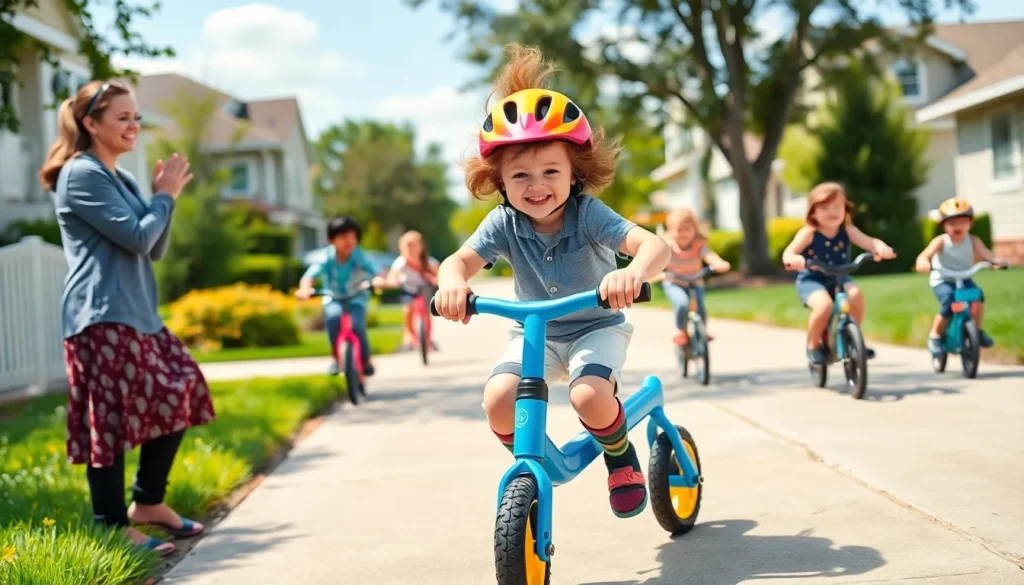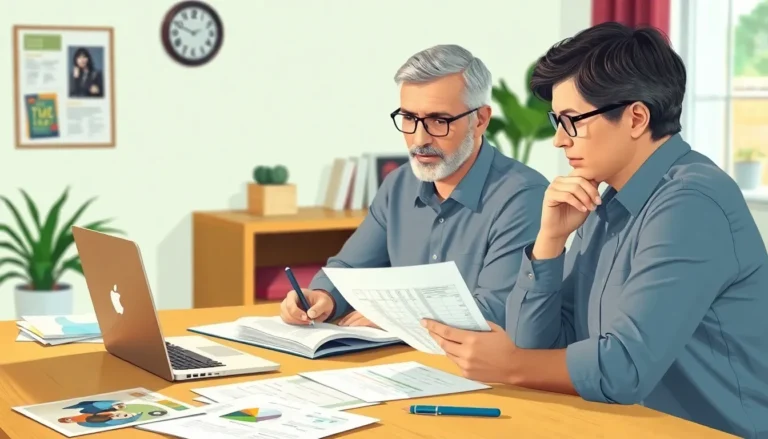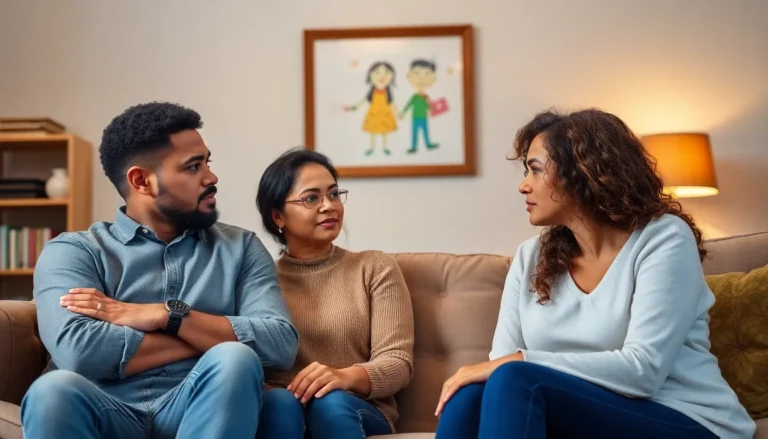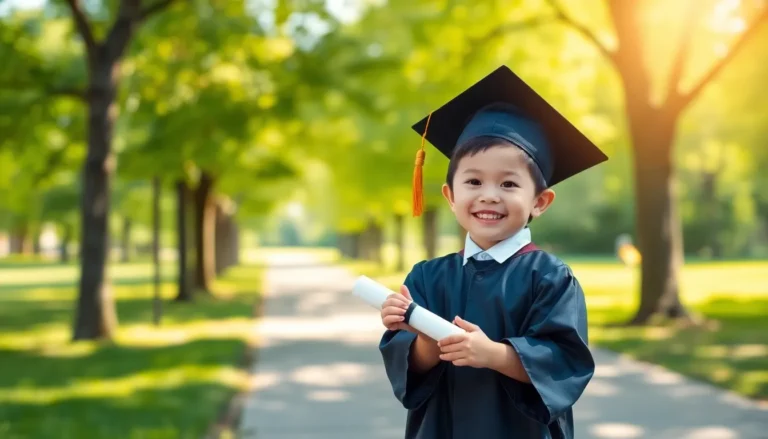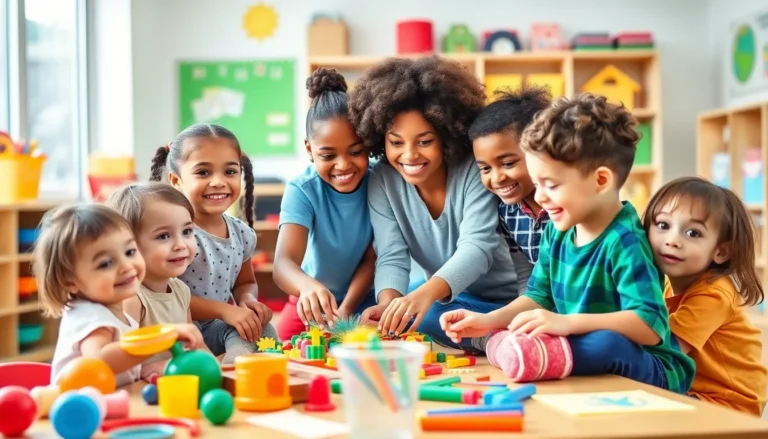Table of Contents
ToggleIn a world where toddlers are often seen zooming around on their flashy tricycles, balance bikes are the unsung heroes of early cycling. These two-wheeled wonders are designed for little ones to master balance before they even think about pedaling. Imagine your child gliding gracefully down the sidewalk, wind in their hair, while you bask in the glow of parental pride. That’s the magic of balance bike learning.
Overview Of Balance Bike Learning
Balance bike learning plays a crucial role in helping children acquire essential skills for cycling. Toddlers gain confidence while mastering balance, steering, and coordination. Transitioning from a balance bike to a traditional bicycle becomes easier due to these foundational skills.
Typically, balance bikes feature a lightweight design, allowing children to maneuver them effortlessly. Some models include adjustable seat heights, ensuring proper fit as children grow. This adaptability encourages longer usage and aids skill development.
Learning to balance on two wheels takes time and practice. Parents often notice their children developing improved motor skills as they engage with balance bikes. Many kids enjoy the freedom of gliding without pedals, which fosters a sense of independence.
Proper technique enhances the learning experience. Parents can guide children by demonstrating how to sit upright and steer effectively. Encouraging them to pick their feet up while coasting promotes better balance.
Social interaction benefits balance bike learning. Children often ride in groups, providing opportunities for shared experiences and peer encouragement. Riding together enhances their motivation and can lead to longer practice sessions.
Balance bike learning supports children’s early cycling skills. With each glide, they build confidence and develop coordination. Parents appreciate the simple yet effective design of balance bikes, which facilitate a smooth transition to more advanced cycling.
Benefits Of Balance Bike Learning
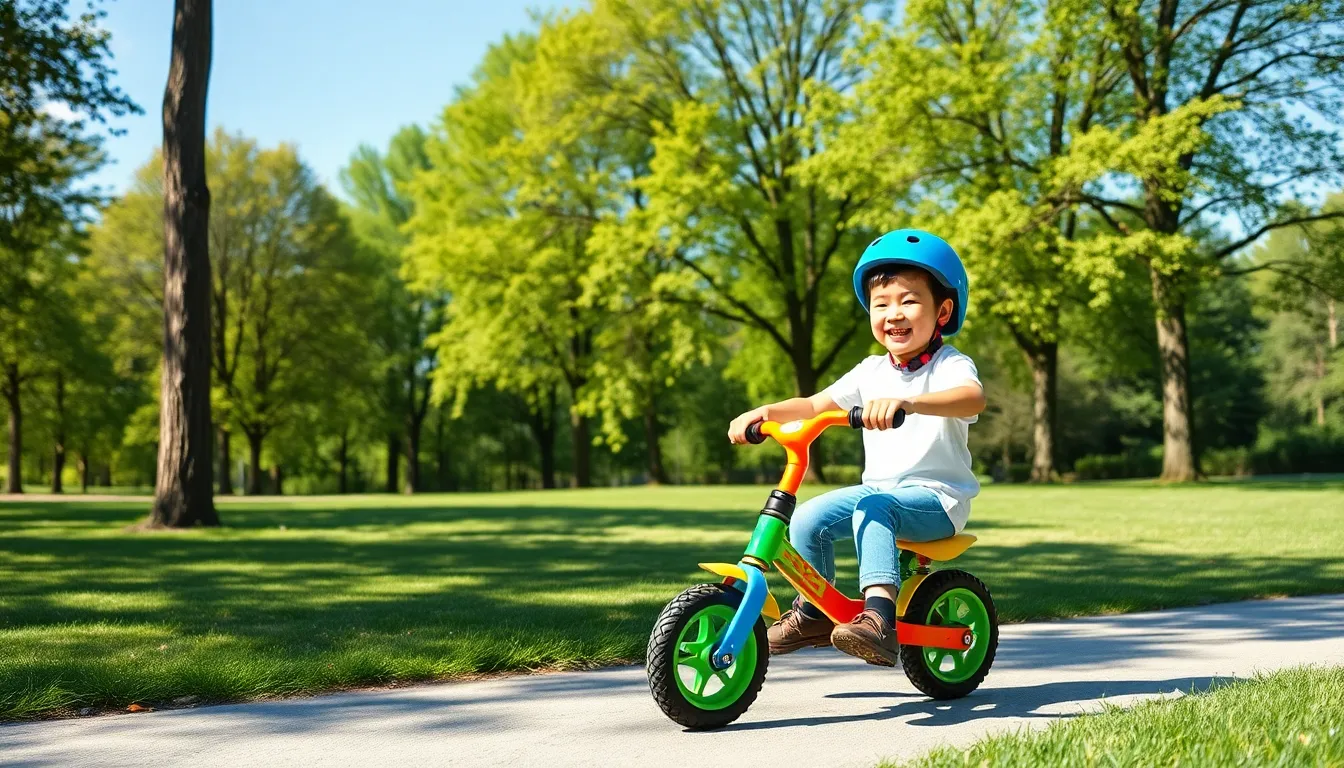
Balance bike learning provides numerous advantages that contribute to a child’s development. Through the experience of riding, children engage in crucial physical and social skills.
Enhancing Motor Skills
Balance bikes significantly enhance motor skills in children. As they navigate the bike, they refine their balance, coordination, and steering capabilities. Developing these skills fosters better control over body movements. Practicing on a balance bike translates to improved muscle strength, particularly in the legs and core. Children learn to push off with their feet while simultaneously steering, reinforcing their spatial awareness. Engaging in this dynamic play encourages the gradual development of gross motor skills, laying a foundation for future physical activities.
Building Confidence
Building confidence in young riders is another key benefit of balance bike learning. Mastering the balance bike creates a sense of achievement in children. Parents often witness their children’s newfound independence as they glide effortlessly along paths. Successfully riding boosts self-esteem and encourages them to take on more challenging courses. When children ride alongside peers, they experience a sense of camaraderie that further enhances their confidence. Social interaction during rides also encourages them to support each other, fostering a sense of teamwork. This confidence gained from balance bike experiences sets the stage for a positive relationship with cycling in the future.
Choosing The Right Balance Bike
Selecting the right balance bike plays a vital role in a child’s learning experience. Focus on size, weight, and specific features to ensure optimal safety and enjoyment.
Size and Weight Considerations
Choosing a balance bike that suits a child’s height promotes comfort and control. Seat height should typically adjust to fit the child’s inseam, allowing them to straddle the bike without difficulty. A weight of around 6 to 8 pounds ensures the bike remains manageable for young riders. Lightweight options are easier for children to lift and maneuver, fostering confidence. Prioritizing a model with a low center of gravity enhances stability, enabling toddlers to balance effectively as they learn.
Features to Look For
Look for essential features that enhance the riding experience. Adjustable seat heights accommodate growing children, extending the bike’s usability. Comfort grips offer better handling and reduce fatigue during rides. Additionally, front-wheel steering improves maneuverability, allowing for sharper turns. Consider puncture-proof tires for durability, minimizing maintenance and providing a safer ride. Lastly, a sturdy frame construction ensures long-lasting use, making it a worthy investment for parents.
Tips For Effective Balance Bike Learning
Effective balance bike learning enhances children’s cycling skills, confidence, and motor capabilities. Focus on creating a supportive environment and promoting independence.
Establishing a Safe Learning Environment
Create a safe space for children to learn balance biking. Choose a flat, open area away from traffic and distractions. Grass or soft surfaces work well for cushioning falls. Ensure children wear helmets and other protective gear to minimize injury risk. Supervision is crucial; parents or guardians should monitor the practice sessions closely. Set clear boundaries in the learning area to keep children focused. Encourage gradual exploration of their surroundings as they gain confidence. Emphasizing safety creates a positive atmosphere for learning.
Encouraging Independence
Fostering independence during balance bike learning builds confidence. Allow children to ride at their own pace while exploring skills. Refrain from holding the bike; instead, let them practice balancing and steering. Celebrate small achievements to motivate further attempts. Encourage children to set goals, such as riding a specific distance or mastering a turn. Allowing them to make decisions supports autonomy and enhances self-esteem. Invite peers to ride together, as social interaction boosts motivation. By nurturing independence, children gain the confidence needed for traditional biking.
Balance bike learning offers children a fun and effective way to develop essential cycling skills. As they glide along, kids enhance their balance and coordination while building confidence and independence. Parents play a vital role in this journey by providing guidance and encouragement, ensuring a safe and supportive environment.
Choosing the right balance bike is crucial for maximizing the benefits of this experience. With the right fit and features, children can enjoy longer riding sessions that promote skill development. Ultimately, balance bikes serve as a stepping stone to traditional cycling, setting the stage for a lifetime of enjoyment and adventure on two wheels.

